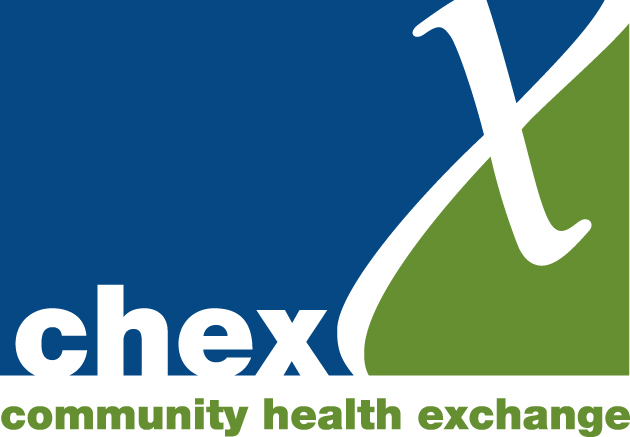Report: CHEX Conference 2021
/This year our online annual CHEX conference brought together more than 100 people across two days to explore Health Issues in the Community HIIC, to learn from the tutors who deliver it and to hear from the participants who have used HIIC to improve the health and wellbeing of their own communities.
Our speakers
Kicking of day 1 we were joined by Jane Jones the original author and driving force behind HIIC; author of ‘Private Troubles and Public Issues: A Community Development Approach to Health’ and the founder of Pilton Community Health Project. Jane shared her story of bringing HIIC into being; the thinking and learning behind it and the challenges faced along the way. She also highlighted the role and relevance of popular education, on which the course is built, for the challenges facing us today and the immediate future.
Next up we heard from Dr Matt Lowther, Head of Place and Equity at Public Health Scotland and their new 3-year Strategy, and what this means for PHS, their partners, and communities.
Watch the opening event with our wonderful Chair Jo Kennedy and fantastic key speakers Jane Jones and Matt Lowther.
Our workshops
Young People and the power of HIIC: Castlemilk Youth Complex
In this workshop, we heard from HIIC tutor Kirsty Chapman, who works at Castlemilk Youth Complex based in the Southside of Glasgow, a youth organisation that has been running for past 28 years and is known as the largest youth arts organisation in Europe.
Kirsty began by setting the scene and highlighting the extensive work undertaken by the complex, all driven by one aim, to meet the needs of the young people in Castlemilk.
Living by their motto “Creating a better future by INSPIRING young people to RECOGNISE, RAISE and ACHIEVE their ASPIRATIONS.” Made by the board 28 years ago and still holds true today.
Kirsty’s presentation was full of useful advice and simple tips on how to encourage young people to become actively engaged in their communities. Kirsty said that with the topics and activities in the HIIC youth pack, the important factor for engagement and to bring these to life, was to be creative and think outside the box.
For example, with the topic poverty, Kirsty shows her group the film “I, Daniel Blake”. The characters and situations are almost true to life for Kirsty’s groups, which can be hard for them to talk about. But by using film, this allows the young people to relate to the characters and discuss, reflect, and evaluate these characters instead of themselves. This method gives these young people a new perspective on the issues around social justice, poverty, and discrimination.
Kirsty talked about some of the challenges which can arise when working with young people such as: defeatist attitude, low self-esteem, unwilling to share and time crunch (working to the school calendar). Kirsty believes we can all overcome these by replacing these issues with having a more positive approach. Defeatist attitude becomes a positive attitude, low self-esteem becomes positive affirmations from both facilitators and fellow members, unwilling to share becomes offer to share yourself and time crunch becomes timeline and set goals.
We then got to view a video which emphasised the fantastic work the young people have taken part in and what opportunities have come from being actively involved. You can watch this video here. Kirsty collaborated with Tony Desmond, a past HIIC student who now works at the Complex, to produce this video.
Links you might find useful that were shared in the chat during the session:
How kids make things fair by Oxfam, very like the biscuit game, exercise in HIIC.
To keep up to date with Castlemilk Youth Complex follow them on:
HIIC Online: The Highs and Lows from South Lanarkshire
In this workshop, we heard from the pioneers of HIIC online delivery; from the participants themselves who facilitated the workshop with ease and humour and from their tutor Fiona Douglas (NHS Lanarkshire).
The South Lanarkshire Superstars (and they are indeed Superstars) shared with us their experiences of suddenly switching to online HIIC during the first lockdown, and their honest experiences of what that meant to them. They did this by sharing their video which you can view here, well worth a watch.
During the Q&A session, the group shared how reading and researching the different areas of HIIC helped them develop their critical thinking. And that they continue to dive deeper into topics even having finished the course. “It’s now a frame of mind, we take nothing at face value anymore, we will research further” They also spoke about how their confidence had “shot through the roof “and they were hungry to learn more, get involved in other courses and do more in their communities.
The group then gave us a virtual tour of the website they created as part of their group project; check it out here amazing piece of work. This has pages on many of the topics covered in HIIC such as health inequalities, power, poverty. Alongside writings not just from the women themselves but other women they are in contact with from other groups. There are also details of local events, helplines, recipes, yoga and meditation – a powerful tool for others to use.
We then had a chance to speak with the HIIC facilitator Fiona who worked with the group. She shared how you need to prepare more for online delivery than face to face; have a Plan A,B and C. But there are advantages to being online which include amazing participation and attendance. She also felt that you could more readily accommodate different learning styles online by using a range of methods. You can hear more from Fiona in a couple of blogs about her experience early days here.
Getting into Trouble: Exploring ‘troublemakers’ in popular education
Jane Jones introduced the workshop theme of ‘Getting into Trouble’ which recognises that social change doesn't always happen with everybody's agreement - it often starts with people asking questions and not taking things for granted. She explored the notion of ‘troublemakers’ in relation to popular education and its importance in ‘breaking the silence’, highlighting some examples of star trouble makers like Rosa Parks in the civil rights movement in America.
Jane invited people to have a think about times when they have maybe wanted to say something but didn't, or did try to raise something that wasn't being addressed and what were the reactions of the people they raised it with. Participants were asked to share their stories using a drawing or an item from their house that described how they felt when they did this, everyone got creative and we shared some wonderful examples to tell our stories!
When we delved into this in more depth, people described feeling frustrated, scared, uncomfortable and awkward when challenging the status quo, and that quite often the ‘dominant’ view swallows up other or different views that are equally valid. But whilst its difficult when you’re met with hostility and resistance, people also felt it was empowering to talk about things that aren’t normally talked about, and that persistence, keeping strong to your values and seeing where opportunities lie are important factors when ‘getting into trouble’ to make social change happen.
Measuring HIICs impact – how do you evidence yours?
In this workshop, Andrew from CHEX introduced some of the existing ways that have been used to measure the impact of HIIC. This includes qualitative evidence such as case studies, personal testimony and video. More quantitative methods include the evaluation feedback forms which HIIC participants are asked to complete at the end of the accredited course. Workshop participants then moved into virtual breakout rooms and discussed how they would like to see HIIC’s impact measured, and some really good ideas were generated, as can be seen on the workshop jamboard. The point was made about getting the balance right, in that we “don’t want participants to feel like research guinea pigs, but it’s important to evidence change”.
The workshop then went on to explore ways that evidence can be used, including improving the course and convincing public sector partners to support HIIC. Participants discussed this in their breakouts and thoughtful observations touched on the ethics of sharing personal feedback and stories, and using evidence to demonstrate to participants that their voices are being listened to and actions being taken as a result. (See jamboard).
Top down vs bottom up: Strategic planning for HIIC
This workshop was presented by practitioners from three different parts of Scotland, Dundee, Falkirk and Glasgow, and explore the benefits and challenges of strategically planning a bottom-up course like HIIC. Ann Duffy from Glasgow Health and Social Care Partnership described how she and her team took a strategic approach to HIIC, while remaining flexible and open to compromise. Christine Dallas and Elaine Sword from the Community Health Team in Dundee emphasised that they had support from strategic managers, and that they took a “softly, softly” approach, in which participants take part in a range of activities and then have the opportunity to take part in the course. Michelle Brown and Stacey Robertson from Falkirk Council’s Community Learning and Development (CLD) team described how HIIC was now a central part of delivery within CLD in Falkirk, and highlighted the potential of HIIC to influence wider policy such as around the cost of the school day.
In the breakout session, participants discussed challenges and opportunities to strategic planning for HIIC. A google jamboard was used to capture challenges and ideas for how to overcome these. One key theme was the need for planners and policy makers to have a better understanding of community development approaches. This would ensure HIIC and other CD approaches were implemented well, including giving practitioners the freedom to deliver in a way that suits the community they are working with.
Participants took part in a poll mid-way through the workshop and also at the end. By the end of the workshop, the proportion of people who thought HIIC should “very much” be strategically planned had increased from to 50% to 60%. The remaining 40% felt HIIC should be strategically planned “to an extent” reflecting the point that a bottom-up course such as HIIC should remain flexible and sensitive to community priorities.






